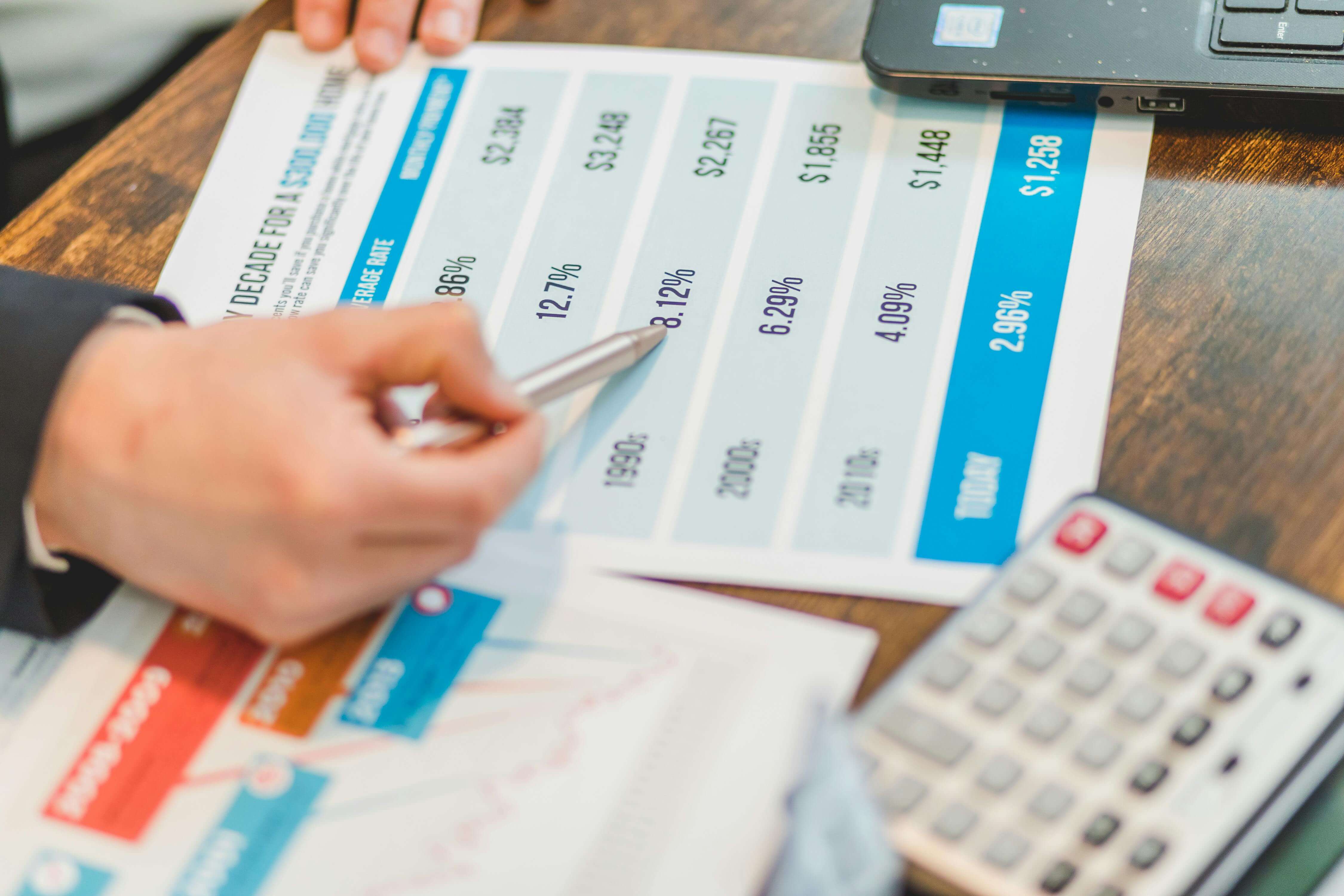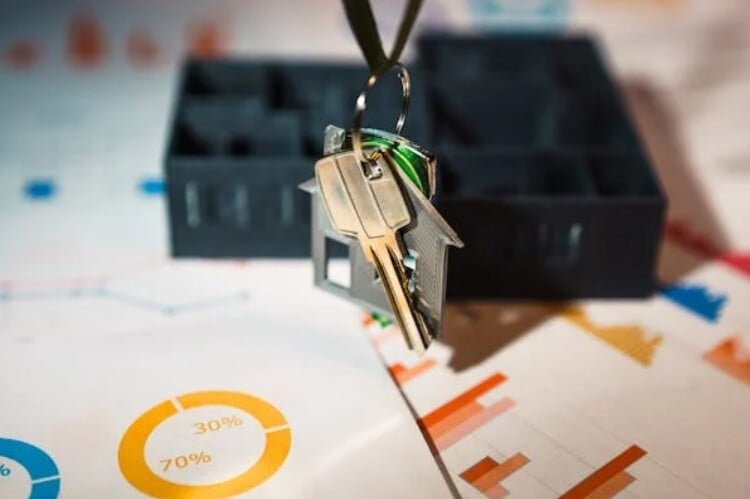NOI Real Estate: What Is It (and How to Calculate)
NOI (net operating income) is one of the fastest and easiest ways to determine whether you should buy an investment property. In this guide to NOI...

Looking to buy your first or next investment property? If so, you’ll likely need a mortgage, and your interest rate will determine how much you pay for your monthly mortgage payment. Keep reading for more information on today’s investment property mortgage rates and several strategies you can use to lock in a lower rate!
Summary:
Investment property mortgage rates tend to be 0.5% to 1% higher than primary homeowner mortgage rates, largely due to increased lender risk. These risks include vacancies, inconsistent rental income, and a higher likelihood of default by the borrower. Lenders charge more for investment property loans to account for these factors.
Source: https://www.mortgagenewsdaily.com/ (Note the above are owner-occupied mortgage rates. Investment property mortgage rates will be 0.5% to 1% higher, on average.)
Purchase your next turnkey investment property with just 5% down!
How do homeowner and investment property interest rates compare? Let’s do the math. Say you’re buying a $400,000 property. With today’s 30-year fixed interest rates hovering around 6.5% for primary loans and around 7.25% for investor loans, the numbers would look like this:
|
Mortgage Rate |
Monthly Payment |
Total Interest |
|
|
Primary Homeowner Loan |
6.5% |
$2,528.27 |
$510,177.95 |
|
Investment Property Loan |
7.25% |
$2,728.71 |
$582,333.84 |
In this example, the investor would pay roughly $70,000 more in interest over the life of the loan!
Interest rates can vary greatly depending on the type of investment property loan you choose. See some of the most common options and their respective mortgage rates below. For a full breakdown of these loans (and others), check out our full guide on investment property loans!
|
Loan Type |
Interest Rate |
|
Rent to Retirement 5% Down Loan |
|
|
Conventional Loan |
0.5% – 1.0% higher than primary loans |
|
DSCR Loan (Debt Service Coverage Ratio) |
1.5% – 3.0% higher than primary loans |
|
Portfolio Loan |
1% – 2% higher than primary loans |
|
Commercial Loan |
1.5% – 3% higher than primary loans |
Need a lower investment property down payment and/or interest rate? Rent to Retirement offers an unmatched loan product for rental property investors: the 5%-down new build investment loan! This allows you to buy multiple rental properties with just 5% down and use builder concessions to lower your mortgage rate, reduce the amount of cash you’ll need to close, or get cash back at closing!
Want to get the lowest possible mortgage rate for your investment property? Many investors settle for the first rate they’re offered, when there are several strategies you can use to knock down your mortgage rate:
A larger down payment shows your commitment to the investment and reduces the amount you’ll need to borrow. With less risk, the lender could be willing to give you a better rate.
Your creditworthiness affects your ability to get better loan terms. If you have a low score, bad debt, or a high debt-to-income (DTI) ratio, improve your credit before you buy.
Having sizable cash reserves in addition to your down payment can go a long way toward getting you a lower mortgage rate. Lenders view borrowers who have funds to cover several mortgage payments or emergency expenses as less risky.
Do you already own rental properties? Showing your lender that you have a good track record with other investments could help you get a lower rate!
An interest rate buydown is when you pay an upfront fee in exchange for a lower mortgage rate. While buydowns are often temporary, you could refinance once your buydown period ends (if interest rates have dropped!).
Since 15-year mortgages are considered less risky than 30-year mortgages, choosing the shorter term could help you lock in a lower interest rate. Just keep in mind that your monthly mortgage payment will be higher, so make sure the numbers still work!
Single-family homes often have lower mortgage rates than multifamily properties. Plus, once a property exceeds four units, it requires commercial financing. These loans may have even higher rates!
While 30-year mortgages are most common for investment properties, they’re not your only option. Choosing a 15-year mortgage instead could get you a mortgage rate that is 0.25% to 0.5% lower. Just make sure you can afford the higher monthly payment!
Browse cash-flowing turnkey rental properties for sale!
Need a mortgage for your investment property? Follow these six steps:
What type of property best fits your investing goals? Narrowing down your criteria will help you stay disciplined in your search.
If you have bad debt or a high debt-to-income (DTI) ratio, you might need to pay it down before getting a mortgage.
A lender will use your current finances and investing goals to help determine the best loan product for you. Talking to multiple lenders can help you get the best terms!
Round up your most recent tax returns, bank statements, and any proof of income. If you’re applying for a DSCR loan, use your property’s financials instead!
Submit your mortgage application. If you’re pre-approved, you’ll receive a letter with the potential terms of your loan.
Now you’re ready to buy. Find investment properties that fit your buy box and start making offers!
Homebuyers often get access to lower interest rates and down payment requirements than real estate investors. However, if you buy a property with up to four units and use the house hacking strategy—living in one of the property’s units while renting out the others to tenants—you could get an owner-occupied loan with a lower rate!
Don’t have 15%-25% saved up for an investment property down payment? You may not need it! With Rent to Retirement’s 5%-down financing, you could buy a new build rental property for a fraction of the usual upfront investment. Better yet, with builder incentives, you can get an interest rate buydown—a win-win for cash flow and reserves!
Mortgage rates are constantly in flux, but as of October 2025, investment property loan rates hover between 7% and 7.5%—roughly .5% to 1% higher than primary residence rates.
How much you choose to put down on an investment property depends on your financial situation and investing goals. You might put more money down if you want a lower mortgage payment and more monthly cash flow. You might put less money down if you want to maximize your cash-on-cash return.
Yes! 30-year fixed-rate mortgages are the most common loans for rental properties. For a slightly lower interest rate, you might consider a 15-year mortgage instead.
Yes, investment loans tend to have higher interest rates than owner-occupied loans. Want a lower interest rate? Use the house hacking strategy (living in the property while renting the other units to tenants), or take advantage of Rent to Retirement’s rate buydown incentives for new builds!
Yes, but not always! While investment properties often have stricter loan requirements, you can improve your chances of qualifying with a larger down payment or additional reserves. What’s more, if you’re purchasing a property that will generate positive cash flow, you could qualify for a DSCR (debt service coverage ratio) loan, which is based on the property’s income potential rather than your personal finances.

NOI (net operating income) is one of the fastest and easiest ways to determine whether you should buy an investment property. In this guide to NOI...

With high mortgage rates, fluctuating inventory, and growing economic uncertainty, many are wondering: Will the housing market crash in 2025? In this...
The anticipation of mortgage rate predictions holds significant implications for both individuals and the broader real estate market. Understanding...